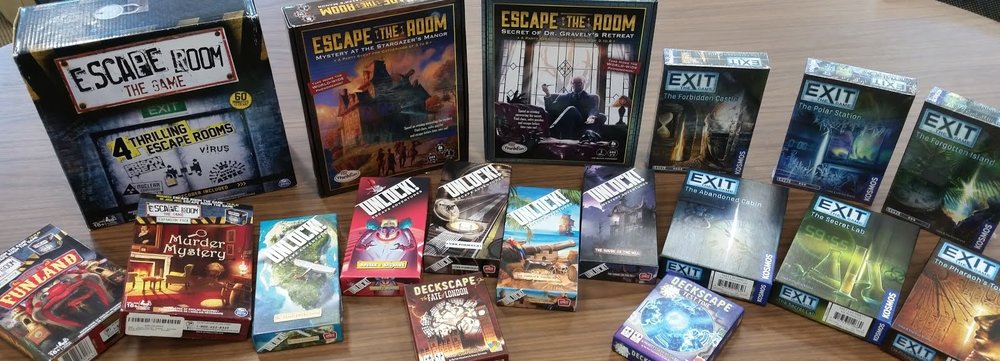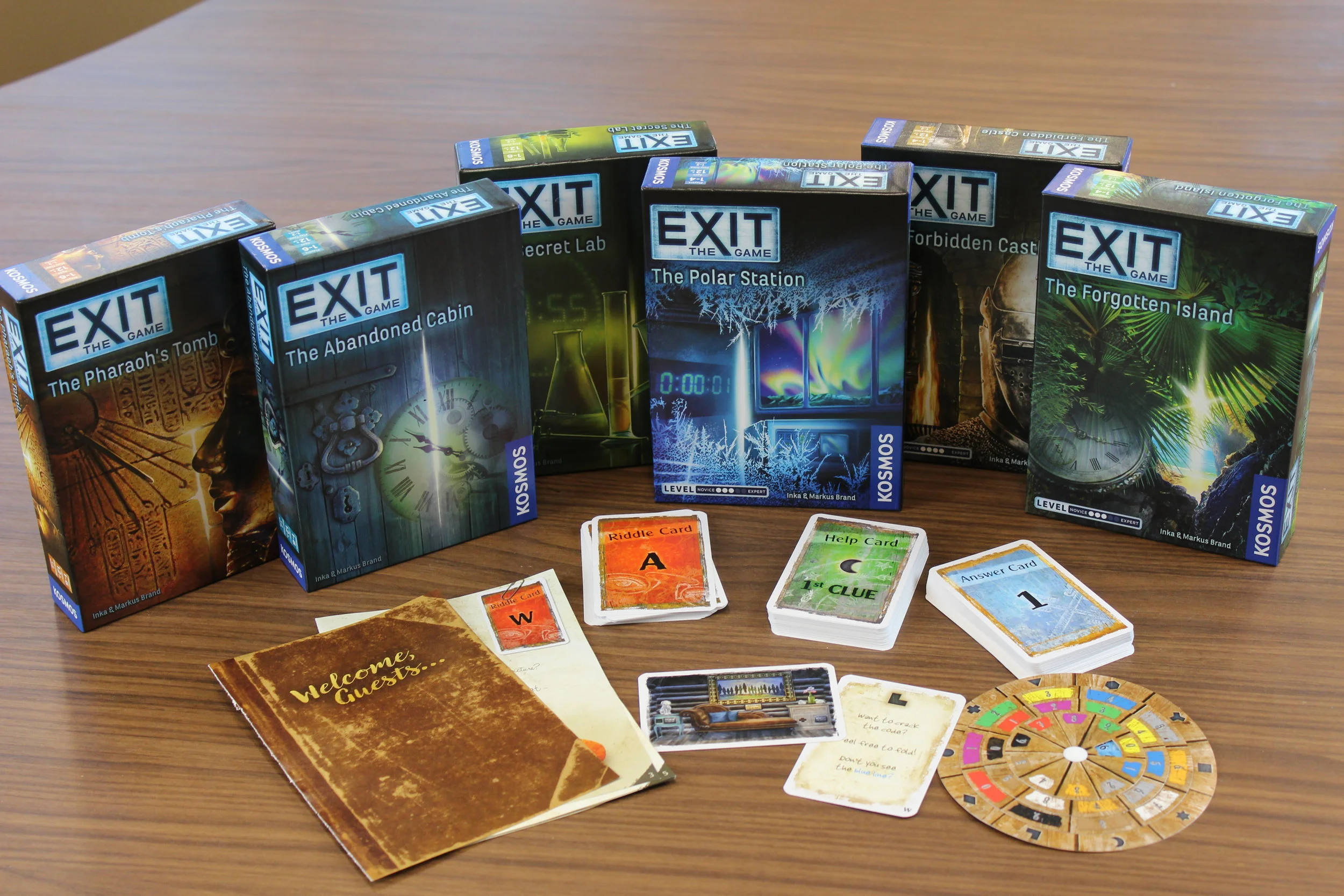Publisher: KOSMOS
MSRP: $14.95
Recommended ages: 12+
Time: 60 - 120 minutes
Reset: Not without Printing
Players: 1 - 6
Recommended Players: 2 - 4
App Required: No
The Kosmos EXIT series is a destructible escape experience where participants are expected to fold, spindle, and even mutilate, the various provided elements in order to find clues and solve puzzles. As of this writing, the authors have played the first three; EXIT: The Secret Lab, EXIT: The Abandoned Cabin, and EXIT: The Pharaoh’s Tomb.
One of the best things about the EXIT games is how they do clues, at least when the system works. Puzzles are marked with symbols such as an hourglass or crescent. When players are stuck they pull a card from the clue deck with the matching symbol. The first card instructs what pages or cards will be needed to solve the puzzle, which is an excellent function of a hint system, while further hints detail the process of solving those puzzles. Unfortunately the signalling is poor at times, meaning players frequently can’t tell when they have all the right pieces for a puzzle, or even which puzzle they should be working on next without actually burning a clue. Add this to the fact that the clue cards sometimes leave out which other game elements are part of a puzzle, both of which mean the EXIT series has some critical flaws.
The mechanic for checking answers is fairly ingenious; players check their answers with a wheel, inputting the correct combination beneath the puzzle’s symbol. This reveals a number, players check that card number in the answer deck to find out if they’re correct or need to give it a bit more thought. This keeps players from brute forcing combinations on the wheel like may sometimes happen in Escape Room the Game.
As far as puzzle quality is concerned, the puzzles in the EXIT series are a bit of a mixed bag. There are some fantastically creative ones, but they’re mixed in with others that are a bit repetitive or aren’t exceptionally intuitive and cause intense frustration.
Fortunately the EXIT games are quite reasonably priced, even for one-use items. Making them great giveaways or for use in programs, like game nights or escape-camps. However there are several reasons they are not ideal for a library game or puzzle collection. They aren’t terribly suitable for groups above three or four. Too many pieces have to be repaired or replaced for each play through so it isn’t a viable addition to a standing collection.
Article by Donald Dennis & Stephanie Frey
Stephanie Frey can be found roaming Twitter. She can also be found selling goodies on Society6.
Games in Schools and Libraries is produced in association with Inverse Genius and the Georgetown County Library System.
Games in Schools and Libraries Group on Facebook
Games in Schools and Libraries Guild at Board Game Geek
Email us: schoolsandlibraries@gmail.com



